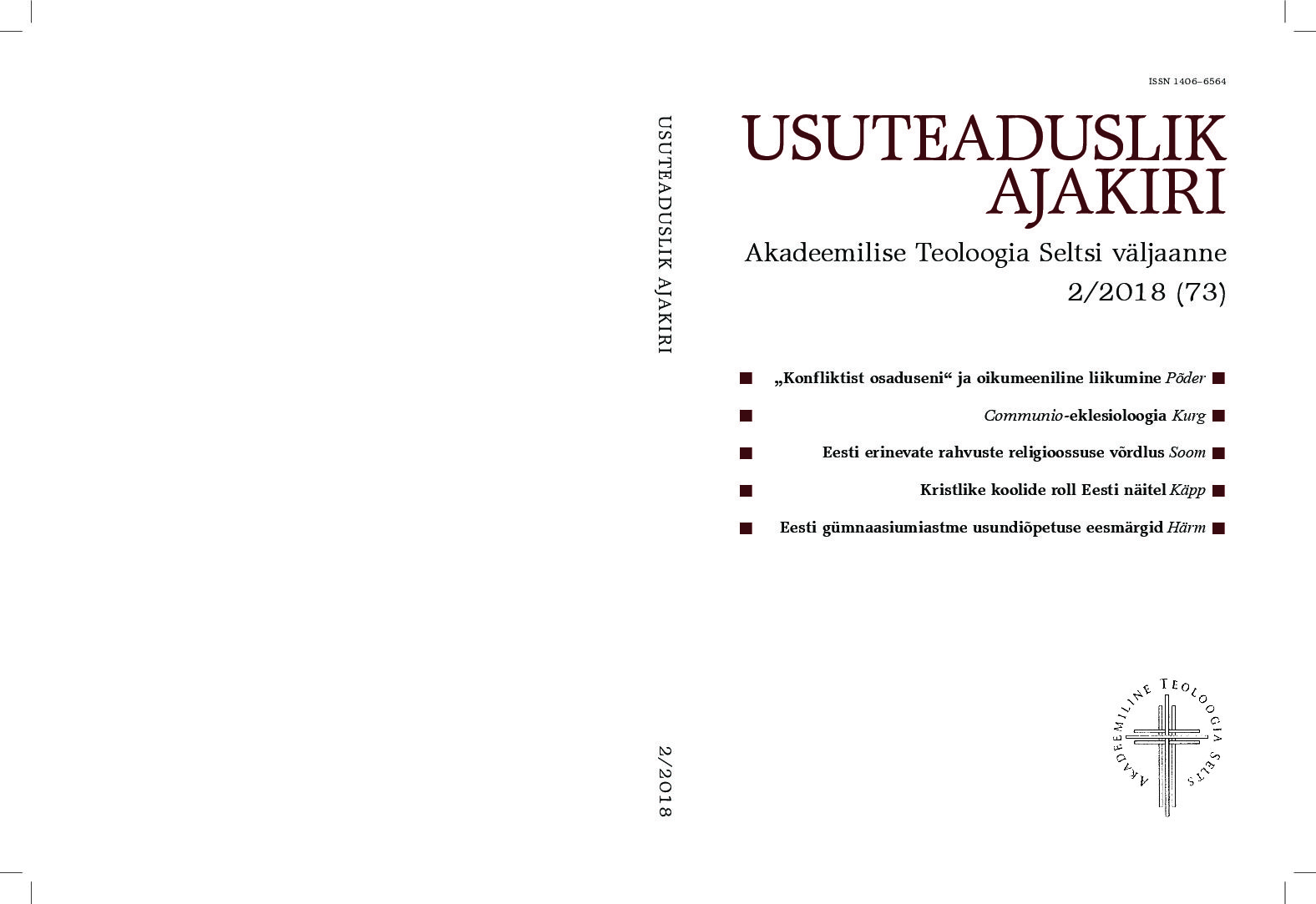Eestis elavate ee sti ja vene kee lt kõnelevate inimeste religioossuse võrdlus
A Comparison of the Religiousness of Estonian and Russian-Speaking People Living in Estonia
Author(s): Kaido SoomSubject(s): Comparative Studies of Religion
Published by: Akadeemiline Teoloogia Selts
Keywords: Religion; Church; New Age Spirituality;
Summary/Abstract: The Estonian society is bicultural, and two of the largest ethnicities in the society are Estonians and Russians. The article seeks to answer the question of the religiousness of Estonian-speaking people living in Estonia in comparison to the Russian-speaking people. The population census of 2011 showed that only 19% of Estonians embrace some kind of faith, but for the ethnic Russians that percentage was 51%. From the Estonians who embraced some kind of faith 72% were Lutherans and 94% of ethnic Russians were Orthodox Christians. Thus, we can see that the Russian-speaking respondents are clearly more strongly associated with institutional Christianity than the Estonianspeaking respondents. Lutheranism is the faith of the Estonians, Orthodoxy the faith of the Russians. Orthodoxy is a bearer of minority culture and a binder of a minority ethnicity. Comparing the Estonian-speaking and Russian-speaking population’s attitude towards the teaching of the classical Church, the analysis of the study “Life, faith and religious life“ highlights that for both language groups, only a small part (about 10%) agrees completely with the most important teachings of the church. The number of believers is broadly the same among the speakers of both Estonian and Russian, but the Russian speakers have a more positive attitude towards Christian religious statements than the Estonian speakers. The New Age spirituality is widespread among both Estonian and Russian speakers, while there are more active supporters of the New Age spirituality among Estonian respondents than among Russian respondents. Meanwhile, there are significantly more Estonian-speaking respondents than Russian-speaking respondents, who completely disagree with the claims of the New Age spirituality. There are not very many strong supporters of New Age spirituality, only about 10%. Also, by comparing the practice of religion in the church by Estonianspeaking and Russian-speaking people, it can be concluded that there are no particularly large differences. The speakers of both languages are equally passive practitioners of the Christian faith. The Estonian-speaking people go to the chapel a bit more often than the Russian-speaking people, and the Russian-speaking people pray much more than the Estonian-speaking people, but there are no major differences on other issues.
Journal: Usuteaduslik Ajakiri
- Issue Year: 2018
- Issue No: 2 (73)
- Page Range: 68-88
- Page Count: 21
- Language: Estonian

